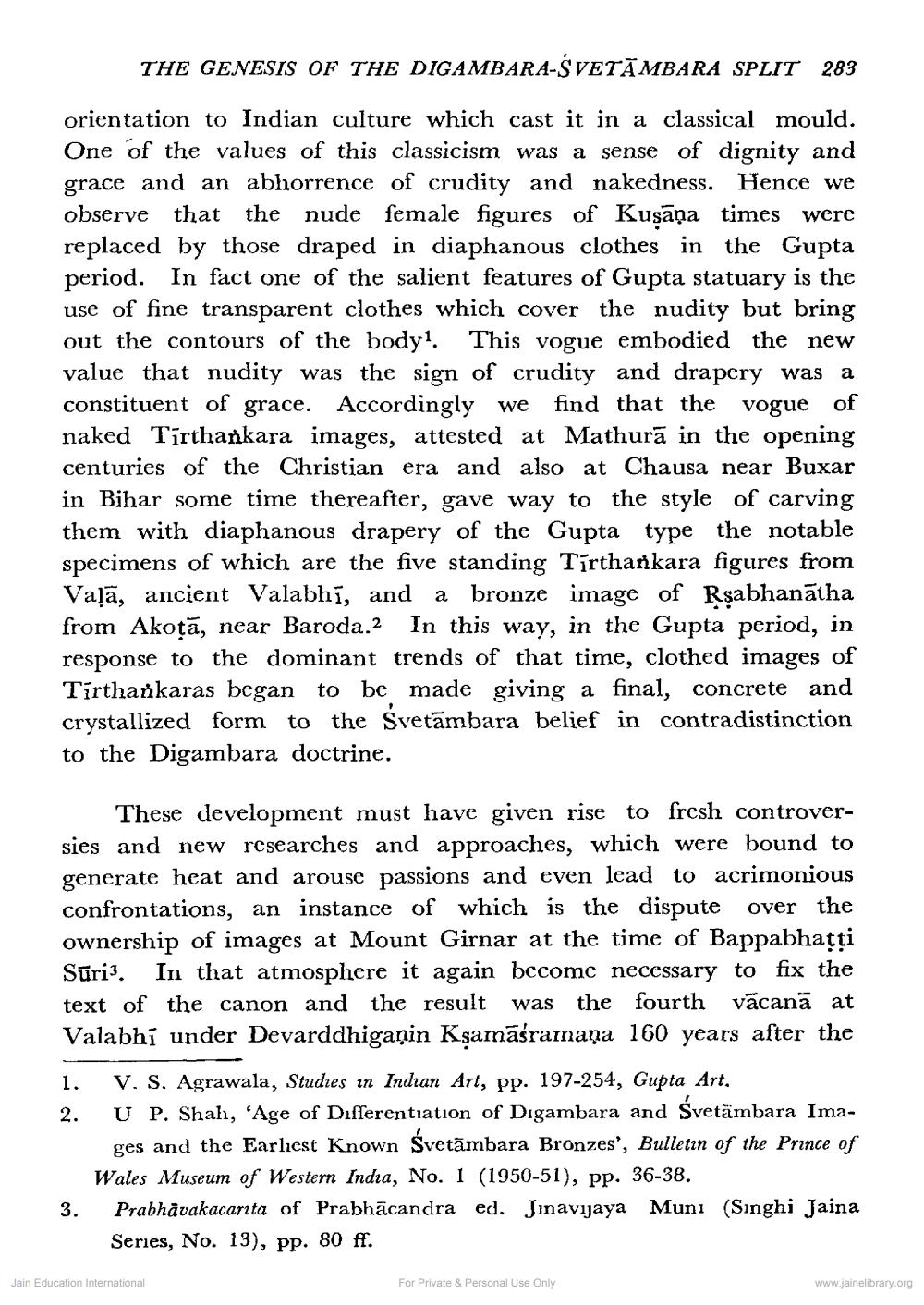________________
THE GENESIS OF THE DIGAMBARA-SVETĀMBARA SPLIT 283
orientation to Indian culture which cast it in a classical mould. One of the values of this classicism was a sense of dignity and grace and an abhorrence of crudity and nakedness. Hence we observe that the nude female figures of Kusāņa times were replaced by those draped in diaphanous clothes in the Gupta period. In fact one of the salient features of Gupta statuary is the use of fine transparent clothes which cover the nudity but bring out the contours of the body. This vogue embodied the new value that nudity was the sign of crudity and drapery was a constituent of grace. Accordingly we find that the vogue of naked Tirthankara images, attested at Mathura in the opening centuries of the Christian era and also at Chausa near Buxar in Bihar some time thereafter, gave way to the style of carving them with diaphanous drapery of the Gupta type the notable specimens of which are the five standing Tīrthankara figures from Vaļā, ancient Valabhī, and a bronze image of Rsabhanātha from Akoțā, near Baroda.2 In this way, in the Gupta period, in response to the dominant trends of that time, clothed images of Tirthařkaras began to be made giving a final, concrete and crystallized form to the Svetāmbara belief in contradistinction to the Digambara doctrine.
These development must have given rise to fresh controversies and new researches and approaches, which were bound to generate heat and arouse passions and even lead to acrimonious confrontations, an instance of which is the dispute over the ownership of images at Mount Girnar at the time of Bappabhațți Sūris. In that atmosphere it again become necessary to fix the text of the canon and the result was the fourth vācanā at Valabhs under Devarddhiganin Kşamāśramaņa 160 years after the 1. V. S. Agrawala, Studies in Indian Art, pp. 197-254, Gupta Art. 2. U P. Shah, 'Age of Differentiation of Digambara and Śvetämbara Ima
ges and the Earliest Known Svetāmbara Bronzes', Bulletin of the Prince of Wales Museum of Western India, No. 1 (1950-51), pp. 36-38. 3. Prabhāvakacarıta of Prabhācandra ed. Jinavijaya Munı (Singhi Jaina
Series, No. 13), pp. 80 ff.
Jain Education International
For Private & Personal Use Only
www.jainelibrary.org




